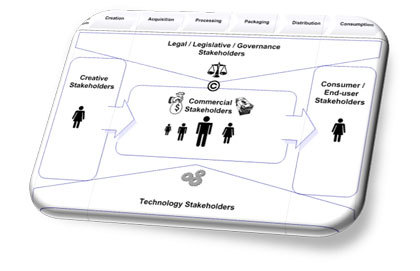Once upon a time, it was the admirable thing to be able to “do one thing, and do it well”, however, in these crazy mixed up times, it seems like anyone and her uncle’s dog are attempting to do multiple things and, in some cases, they seem to do them very well indeed. So how can an ordinary, garden variety, business or individual even hope to compete in such a world? The answer, incredible as it sounds, is to be able to do one thing well, but that one thing is nothing less than the ability to handle change - a whole lot of change. Ok, so this isn’t a lightning flash of brilliance or originality, after all evolution has shown that highly adaptable generalists, such as omnivorous mammals, are more likely to succeed than their single purpose, built-for-speed and all things bling, counterparts.
For a business or individual to compete, survive and excel these days, it must have inbuilt, DNA level, capability to change. Nowhere is this more true and important than in the creative / knowledge industries of the digital age. If I had a five year Private Equity fund to invest as I saw fit, my one yardstick for judging a proposition would be based on this one quality (i.e. how change-ready is the individual, start-up or established business) in everything from business model to individual outlook. Basically, I propose using a stakeholder prism to analyse the change-readiness of the proposition from the point of view of five key stakeholder groups. So how might this work for example with new video, music or publishing venture?
First of all, we’ll need a standard way to establish the overall clarity of vision for that proposition, and for this, I’d suggest using the excellent Business Model Canvas, to provide comprehensive articulation of the business model / proposition in no more than a single poster. This is a near perfect template for most circumstances, and the book provides model patterns for various types of businesses.
Having established completeness and clarity of vision, we can then proceed to analyse the change-readiness of the proposition from five key perspectives (i.e. from the creator, technology, commercial, governance and customer stakeholder groups), loosely based on current and emerging trends affecting the creative industries:

Figure 1: The Five Stakeholder Groups*
- Content creators - In a multi-everything world, creative artistes must also be multi-talented. It is no longer enough to just sing for your supper - look what this author has resorted to doing. The content creators in the proposition must be capable of applying their creativity to the entire lifecycle
- Technology providers - This current situation (and this blog post) is a direct result of disruption caused by Internet and mobile technologies, which enable the multi-everything paradigm of multi-format / multi-channel / multi-platform offerings and experiences so capably delivered by devices such as the iPad etc. The proposition must be able to take advantage of these enablers throughout the entire content lifecycle
- The commercial stakeholders - The Creative industries are starting to embrace the multi-everything philosophy, and to paraphrase one speaker at a recent publishing event, the future of multi-publishing is one-third physical, one-third digital, and one-third live events. The commercial model in the proposition needs to be flexible enough to handle all three if necessary
- Legislative and governance stakeholders - The recent spate of IP Reviews are testament to the fact that a creaking Intellectual Property (IP) system is woefully inadequate to handle the multi-complex threats and opportunities on offer today. The proposition must show how it aims to address challenges presented by a far-too-slowly evolving IP environment
- Customers / end users - Finally, this group of stakeholders encompass all others, and as it is their judgement that really matters to any business, the prime goal of any business venture must be deliver value as early as possible to this group. The ultimate change-readiness test is to demonstrate how the proposition can fail fast and often without losing its hold on the customer / end-user.
Any business proposition that can provide satisfactory answers to the above tests is bound to do well, even without support and investment from my mythical PE fund. However, there are still a couple of very tough but related issues that compound an already perilous creative business environment i.e.:
- Piracy - and I mean real industrial piracy, (not the “we-have-an-outdated-business-model-so-let’s-just-sue-the-people-formerly-known-as-customers” variety), needs to be addressed at a global level. A recent UK Government report put the cost of cyber crime at £27bn, (of which some £9bn was attributed to IP theft), in the UK alone.
- Copyright - and all other Intellectual Property systems must evolve to something better able to handle digital complexity. In other words, we must start to simplify and facilitate the whole end-to-end process of IP Rights. Several promising events / debates have and will continue to take place until a workable solution can be found, e.g.: the World Copyright Summit and Berklee College / Midem’s Rethink Music event each provide an exemplary forum for such worthwhile discourse.
- Territoriality - is fast becoming an outmoded concept in a globally connected mobile digital world. Creative businesses are increasingly looking to reduce the headache caused by historical remnants of territorial boundaries in a global digital environment.
To conclude, in a multi-everything world, the best approach to creative business innovation is to be fast, flexible and adaptable to change, but also keeping in mind the global reach of digital and mobile technology. It is no different than the business of evolution, except that it is probably happening right now on a device near you.
*Image Source: Adapted from The World Beyond Digital Rights Management, BCS 2007

















